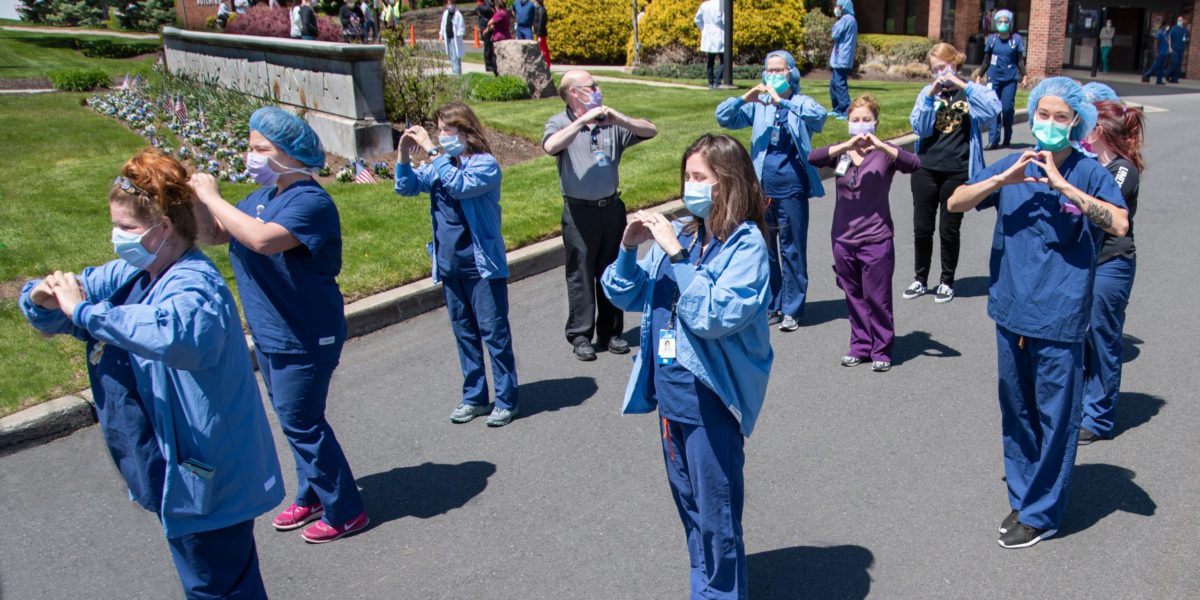Recently, an article in the Washington Post made a case about the need for more ICU beds to accommodate COVID-19 patients. The author compared Alberta to Alabama, noting that they are both sub-national governments. The population of Alberta is roughly 4.4 million in 2021; Alabama is larger at 5.1 million. Alberta’s population is 81 per cent urban while Alabama’s is 59 per cent urban.
Alberta Health Services (AHS) reports that there are 374 ICU beds open in Alberta, including 201 additional spaces put in place to accommodate COVID patients. AHS further reports that as of October 6, there were 300 patients in ICU, “the vast majority of whom are COVID positive… [although] the number of patients in ICU has decreased by 3.5 per cent in the past seven days.”
Further, “provincially, ICU capacity (including additional surge beds) is currently at 80 per cent. Without the additional surge spaces, provincial ICU capacity would be at 173 per cent.”
Clearly that would be untenable. Moreover, filling ICU beds with COVID patients denies such services to people who need intensive care for other reasons, such as severe motor vehicle accidents, heart attacks, strokes, cancer, organ transplants – often unanticipated medical events that could happen to anyone, any time.
The situation in Alabama appears more dire, as reported by the Alabama Hospital Association (AHA). As of Monday, September 20, there were 1,543 staffed ICU beds and 1,517 ICU patients. One week earlier, there was a shortage of 11 beds. Interestingly, the president and CEO of the AHA notes that deaths are one of the reasons for the drop in hospital numbers. Among the adult patients, 84 percent are unvaccinated and only 13 percent are fully vaccinated.
These are a lot of numbers and the numbers change daily. What’s important to note from The Washington Post is the author’s comment that if Alberta had the same number of ICU beds per capita as Alabama, Alberta would not be facing the hospital crisis it is experiencing.
Using Alabama’s bed allocation would bump the number of ICU beds in Alberta to 1331 beds. But would more ICU beds help in Alberta – or in other provinces experiencing surges in hospitalizations during the fourth wave? The Washington Post article suggests as much.
True, if there were an unending ability to increase the number of ICU beds, patients requiring these services could be accommodated more readily. But ICU beds only count if there is also a nurse to attend the patient. Alberta does not have extra ICU staff available; military nurses have recently been deployed to help. And it would take years to provide such specialty training not just to nurses but to other health-care staff required to treat COVID patients.
The lead time to develop specialty health-care workers is years, not days. And there has long been a disconnect in Canada between the current number of health-care providers being trained, the number currently needed, and the number who will be needed in the future.
Part of the disconnect is financially driven. This leads to reductions in incoming class sizes, ignoring the projected needs down the road. In the past twenty to thirty years, admissions to medical, nursing and other health-care provider schools and training programs have yo-yoed. They have been decreased, causing shortages a few years later. At that point, schools open up again, causing excess numbers of new graduates after the time they were needed.
Demographics are ignored, leading to the extremes, for example, when new graduate nurses worked for free in order to get placement on a waiting list for future employment. At the other end of this spectrum, shortages of nurses have caused bed closures. Hospitals and other providers have gone beyond Canada’s borders to fill staff shortages.
Similar swings have happened with physicians. To reduce expenditures to licensed physicians, the number of admissions to medical school have been lowered. Similarly, opportunities for residencies in medical specialties have been reduced, leaving new medical graduates unable to complete their training. A few years later, facing severe physician shortages, medical class sizes increase.
And so it goes. And the staffing of ICU beds is just one aspect of the issue.
With a limited pool of trained health-care providers, every position that gears to ICU treatments reduces the numbers in other medical specialty areas. What would be the consequence for family physicians, for surgery and surgical subspecialties, for emergency room staff, for cardiologists, oncologists, rheumatologists, pediatricians, geriatricians and many, many other specialties?
The dire COVID circumstances in both Alberta and Alabama are filling ICUs as fast as additional beds can be staffed and added to existing complements. But don’t blame the ICU bed numbers for the hospital crises. And don’t ignore the myriad other differences between the health-care systems in Alberta and Alabama, not the least of which is the difference between public health care in Canada and the existence of large, private hospital chains in the U.S.
The real issue, as has been demonstrated repeatedly, is the number of people who are partly or totally unvaccinated. These are the people who are falling ill from the Delta variant. They are the people who are filling ICU beds; often, they are the people who are dying from COVID.
Unfortunately, the adamant anti-vaxxers are the people who are against vaccine protocols, mask-wearing and other public health measure such as social distancing. Worse yet, they are the people protesting outside hospitals, vaccination sites and other health system locations. Yet, when they fall sick, these same people expect to be taken care of by the people against whom they were demonstrating.
It’s a difficult concept to understand. But what is clear is that the number of ICU beds is not the reason for increasing COVID incidence and hospitalization.



